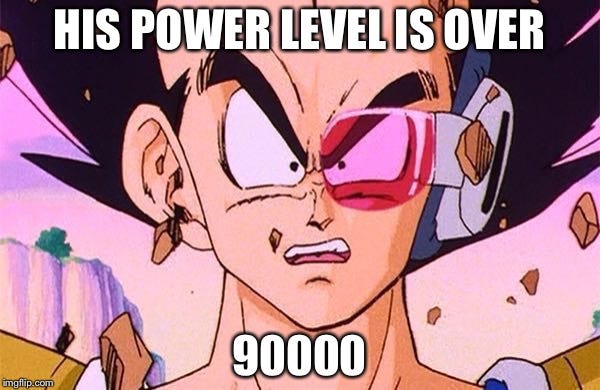Understanding Power Empowers
This entry is part of a series on “Applied Cratology”: Part 1. Understanding Power Empowers. Part 2. The Status–Power Gap. Part 3. The Sociopath Problem. Part 4. Conspiracy Theory vs. Coincidence Theory.
We are done with sages.
We have discarded wisdom.
We have discovered the philosopher’s stone.
Now, we’ll be moving on to something else:
Power.
As philosopher Peter Sjöstedt-H says, “understanding power empowers.”
He’s right.
To borrow a beloved Dragon Ball Z phrase: if you’re ready to increase your “power levels,” buckle up.
Wisdom Literacy to Power Literacy
Power literacy.
Having it = demystifying power, which allows one to become “wise as serpents” (Matthew 10:16), finally giving us a chance to put the serpents in their place.
In a previous workshop I hosted, I introduced the following premises:
Premise #1. Power and status are different things.
Premise #2. Most chase status, not power.
Premise #3. If you cannot spot power dynamics locally, you cannot spot power dynamics globally.
We’ll be examining the status-power gap, and how it’s so critical to navigate power dynamics, locally and globally. However, the last premise introduced relates to the essence of this Substack:
Premise #4. Becoming less foolish = demystifying power and gaining power literacy.
Becoming less foolish, also known as cultivating a “wisdom literacy” (as a reader recently called it in response to my last entry), is the most important literacy one can acquire, because it answers the “why” question and points toward the “how.” It naturally leads to the cultivation of a power literacy, the next most important literacy.
Power is a language one can speak and hear, and it is not explicitly taught in school but rather concealed. The powerful do not want you to be power literate, because they do not want you to know they have power.
Rule #1 among the power-savvy: maintaining power requires concealing it.
Being knowledgeable about politics does not translate into having good power literacy. In fact, many who are interested in politics lack it. Politics is “the exercise of power,” and having theories, ideologies, or even a science about power’s exercise is different from actually being able to spot it, understand it, and map it in one’s lived environment.
I’ve seen the phrase “cratology” before in obscure academic papers, but it does not seem to be widely used. It comes from the Greek word “kratos,” meaning power, and the suffix “-ology,” meaning study. The study of power. A perfect and underused phrase that I will now employ to refer to a multidisciplinary study of power that can be applied to understand power at all levels—from one’s daily life to the “grand chessboard” (Brzezinski).
One’s power levels correspond to one’s ability to exercise power wisely; a prerequisite for this is being a good cartographer of power, knowing who or what actually holds it.
I’ve been examining this topic for years and have collected a grab bag of principles, theories, and methods. Some examples:
Example 1: The Principle of Least Interest
Those who are least interested in a relationship have the most power.
Being “least interested” means having less emotional investment.
This principle applies to countries, corporations, and couples.
Reflect on your past or present romantic partnerships: who cared less? That person held or holds more power in the relationship.
(The solution to this, of course, is love—which binds and unifies.)
Example 2: Three Faces of Power
According to the great sociologist Steven Lukes, power has three “faces.”
The first level is decision-making power: those who can make decisions have greater power than those who cannot.
The second level is agenda-setting power: those who set the agenda have greater power than those who merely make decisions.
The third level is ideological power: those who shape worldviews have the greatest power.
Who has been shaping your worldview?
And who has been shaping theirs?
Example 3: Power Mapping
Power mapping is the ability to visually map actors and their relative power levels in order to enact influence. It involves the following steps:
Define the goal: what needs to be done.
Identify the key power node within the institution, scene, or movement.
Map their relational landscape.
Assess the power dynamics within this landscape.
Highlight their most significant relationships.
Develop strategy and tactics based on this mapping.
This process happens all the time.
Sophisticated activist groups use it deliberately. Sociopaths do it instinctively. Knowing your own power map helps defend against influence campaigns against you.
***
How does one demystify power and thereby increase one’s power levels?
I’d like to figure this out, and perhaps I’ll embark on an “inverse course,” a new pedagogical approach that develops a discipline of knowledge—such as applied cratology—through the collective intelligence of those called to discover it.
Some structure is needed, along with a basic syllabus.
If I were to “teach” (or steward) an inverse course on cratology, what would it include?
In the next entry, I’ll introduce three recommendations. If you have any recommendations for a power literacy syllabus, or any useful principles, theories, and methods in your power literacy toolkit, let me know…


